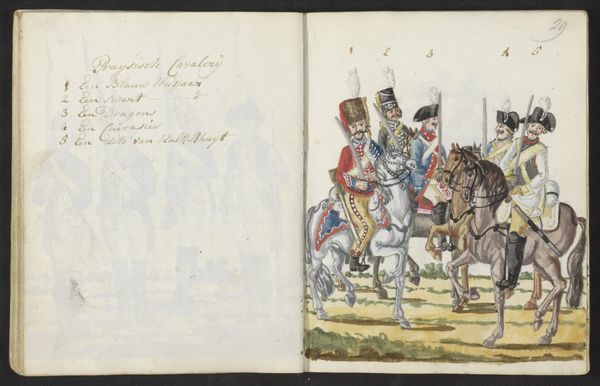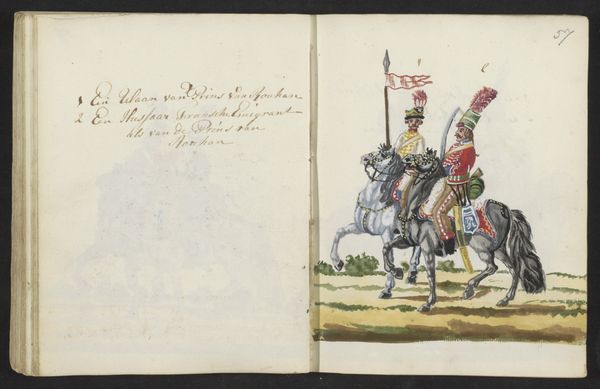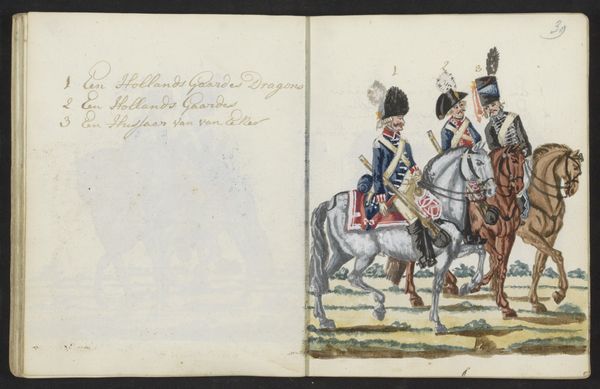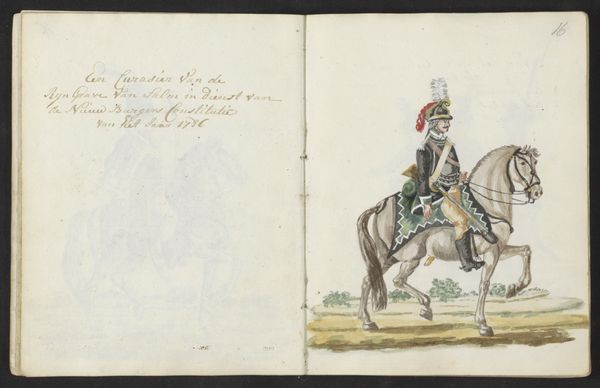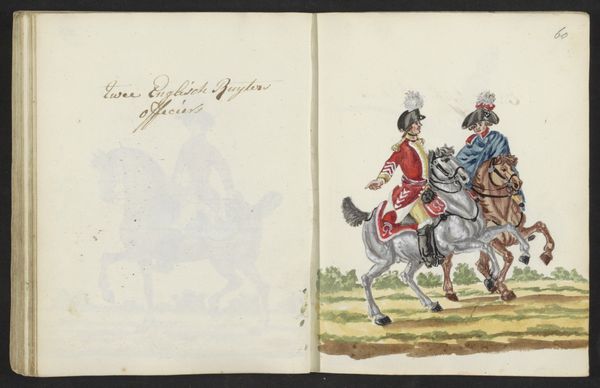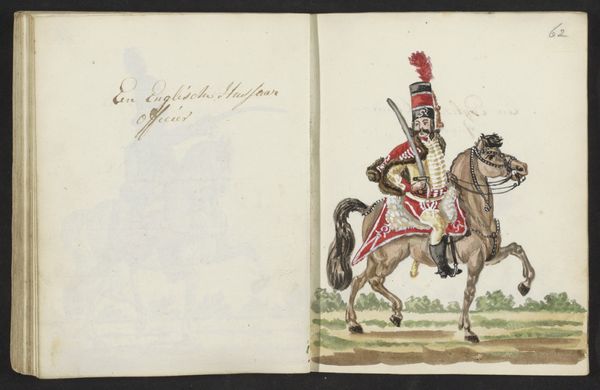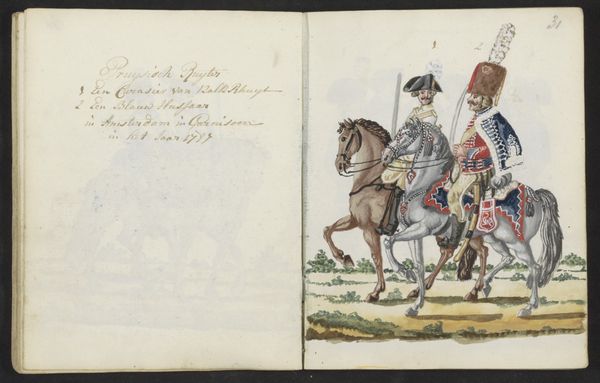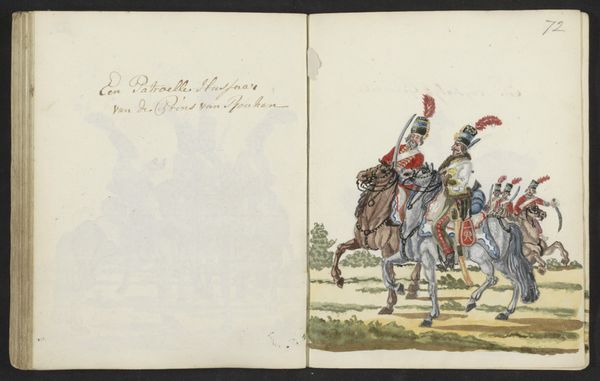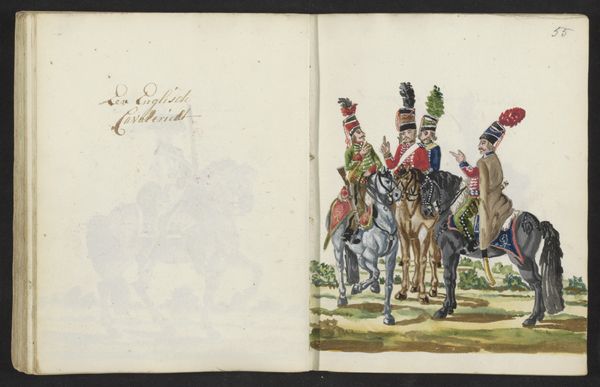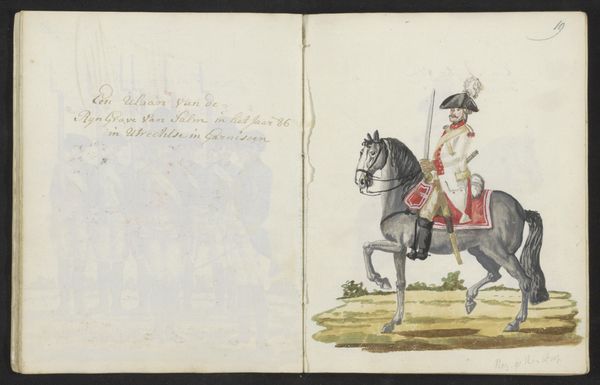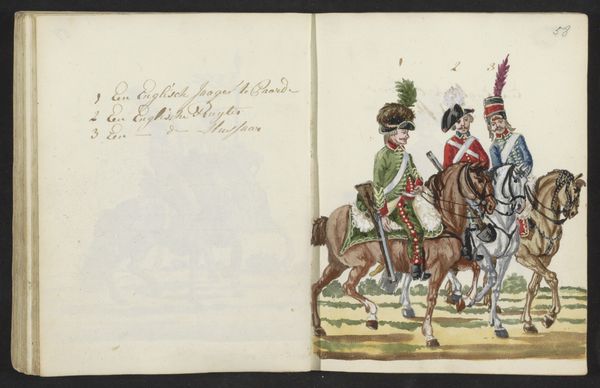
drawing, coloured-pencil, paper, watercolor, ink, pencil
#
portrait
#
drawing
#
aged paper
#
coloured-pencil
#
pen sketch
#
sketch book
#
figuration
#
paper
#
personal sketchbook
#
watercolor
#
ink
#
coloured pencil
#
romanticism
#
pen-ink sketch
#
pencil
#
pen work
#
sketchbook drawing
#
history-painting
#
storyboard and sketchbook work
#
sketchbook art
#
miniature
Dimensions: height 197 mm, width 310 mm
Copyright: Rijks Museum: Open Domain
Editor: Here we have "Uniformen van buitenlandse cavalerie," made around 1795-1796 by S.G. Casten. It's a drawing, or rather, a series of drawings on paper, using watercolors, ink, and colored pencils. It reminds me of illustrations from a storybook, but the uniforms look very detailed. What's your take on it? Curator: It's fascinating as a visual document of its time, isn't it? This piece, existing in the late 1790s, appears to meticulously document the uniforms of various foreign cavalry units. We can see it as a product of the era’s intense military and political restructuring, especially considering the upheaval caused by the French Revolution. Editor: So, the detailed rendering of uniforms served a specific purpose? Curator: Exactly. Uniforms, back then, weren't just clothing; they were visual signifiers of allegiance, rank, and power. This drawing reflects the growing interest in categorizing and understanding these markers. Casten, through their art, engages in a sort of visual inventory of power. Why do you think he made such an intricate representation? Editor: Maybe to record these different units, like a catalogue of military might? Or maybe he worked for a military organisation? Curator: Both very astute points! Such detailed visual records could serve military intelligence or be a source of pride and identity for those units. Consider also how the medium, the personal sketchbook, suggests this wasn't intended for mass consumption but more of a personal or institutional reference tool. What does that suggest about its role? Editor: That it offers an insight into the ways individuals at the time perceived and wanted to classify the world around them? It makes you consider how the creation of such a detailed record would’ve informed their understanding of their environment. Curator: Precisely! It also makes me consider how artworks are deeply linked to power and societal forces. Thank you for guiding me into these considerations. Editor: Thanks for showing me a fresh perspective on visual art and historical and cultural relevance.
Comments
No comments
Be the first to comment and join the conversation on the ultimate creative platform.
